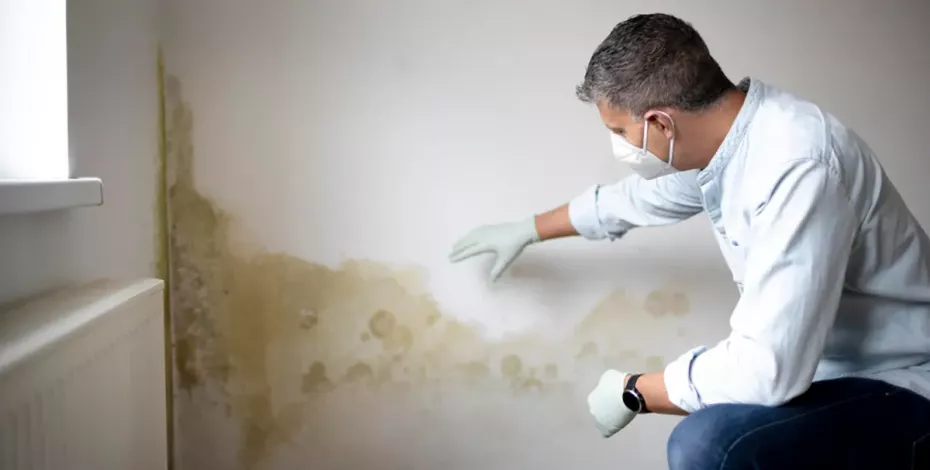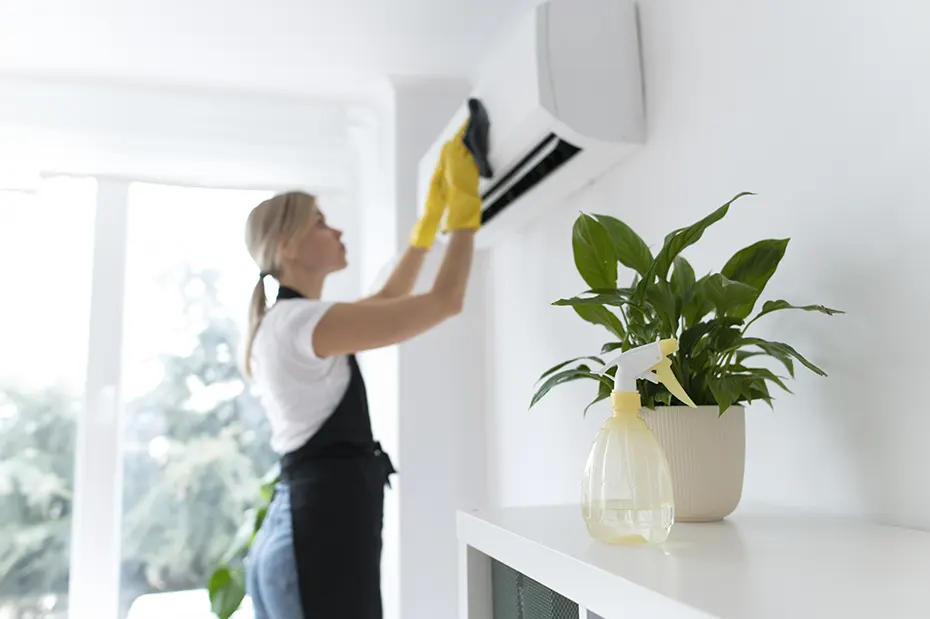Moisture and mold in the apartment: This is how to permanently solve this problem!

Moisture and mold are common problems in residential spaces, whether you live in a new or old building. They are recognizable by a specific musty smell and visible stains on walls, ceilings, and other surfaces. Not only does this problem aesthetically spoil the appearance of your space, but it can also pose a serious health risk. Fortunately, there are steps you can take to permanently solve this problem and create a healthier living environment for yourself and your family.
Causes of moisture and mold indoors
Before tackling the issue of moisture and mold in your apartment, it’s crucial to understand their root causes. Mold can be an "acute" condition due to sudden water leakage in the wall, but in that case, the problem will arise suddenly, and the cause can be easily detected by a professional service. On the other hand, there are certain conditions in residential spaces that favor the development of mold in the long term. Some of the most common are inadequate ventilation, weak wall construction, and lack of sunlight. In the summer, when the outside air is warm and humid, contact with cold wall surfaces creates water that remains in the walls. In winter, due to the significant difference between the outside and inside wall temperatures, condensation of moisture in the air occurs.
How does mold affect health?
Inhalation of mold, especially if constant, can cause respiratory problems such as coughing, difficulty breathing, eye and skin irritation. In particularly sensitive individuals and children, it can lead to the development of asthma and bronchitis. Mold similarly affects pets living in enclosed and contaminated spaces.
Types of mold: Which is the most dangerous?
No type of mold that forms in a residential space is harmless to the occupants. One of the most notorious is the so-called black mold, which produces toxins associated with permanent health problems, such as immune system deterioration and mental damage. Greenish, blue, or yellow mold often appears in basements and attics. It is also associated with poor memory, and increased anxiety. Aspergillus is mold that you have surely seen on stale bread. It can be green, white, or gray and is the most common type of mold indoors because its colonies thrive very easily and do not require catastrophically neglected conditions for its formation.
How to get rid of mold in the apartment?
Although hygiene does not affect the formation of mold in space, nor can it be removed with regular cleaning, the affected area where you see mold should be immediately cleaned with a special antimicrobial agent. For these products to work effectively, it is necessary to strictly follow the instructions. Depending on the agent, multiple applications at prescribed intervals may be required.
Checking and repairing pipes
If there are sources of water leakage in the apartment, such as dripping from the roof or damaged pipes, the result will be a wet wall and characteristic stains, visible only on the affected parts. To prevent greater damage and costs, immediate intervention by a plumber is necessary.
Ventilation and air drying

If the space is prone to moisture formation, one of the most important steps is to ensure effective ventilation in the apartment. It is recommended to install ventilation that concentrates moisture and exhausts it outside, while the use of moisture absorbers will maintain humidity at an optimal level. Additionally, it is crucial to regularly ventilate rooms. In winter, when there is a significant temperature difference inside and outside, it is necessary to periodically create a draft by opening all windows and doors for a few minutes.
Investing in quality insulation
If the problem is "systemic," that is, concerning the entire space of the apartment due to poor construction, the problem can be solved by investing in quality wall and ceiling waterproofing that will prevent moisture from entering the rooms. It is important to ensure there are no damages and cracks in the wall through which air and moisture could move uncontrollably. There are many materials and coatings on the market for waterproofing foundations, basements, terraces, kitchens, bathrooms, roofs, and other problematic places, so there is an adequate treatment for every building.
This is a strenuous and serious problem that should be a priority in solving, primarily due to its harmful impact on human and animal health. As we described, mold development occurs due to specific climate conditions, but also due to the construction quality of the building itself. Based on everything said, it is best to deal with controlling the humidity level, temperature, and air movement in the living space. Some measures require more investments in quality ventilation, insulation, and carpentry, while others are simple, like frequent ventilation and avoiding drying clothes indoors.
We hope that the insights and advice from this text have been useful and that you will solve the existing problem quickly and efficiently. Find out other ways you can maintain a healthy environment in your home from our recent text on this topic. City Expert company is your guide in the real estate world, so we strive to provide all relevant information and knowledge regarding your home. For verified legal advice from experienced agents and lawyers, current news about the real estate market, and topics on apartment decoration, follow our blog.


